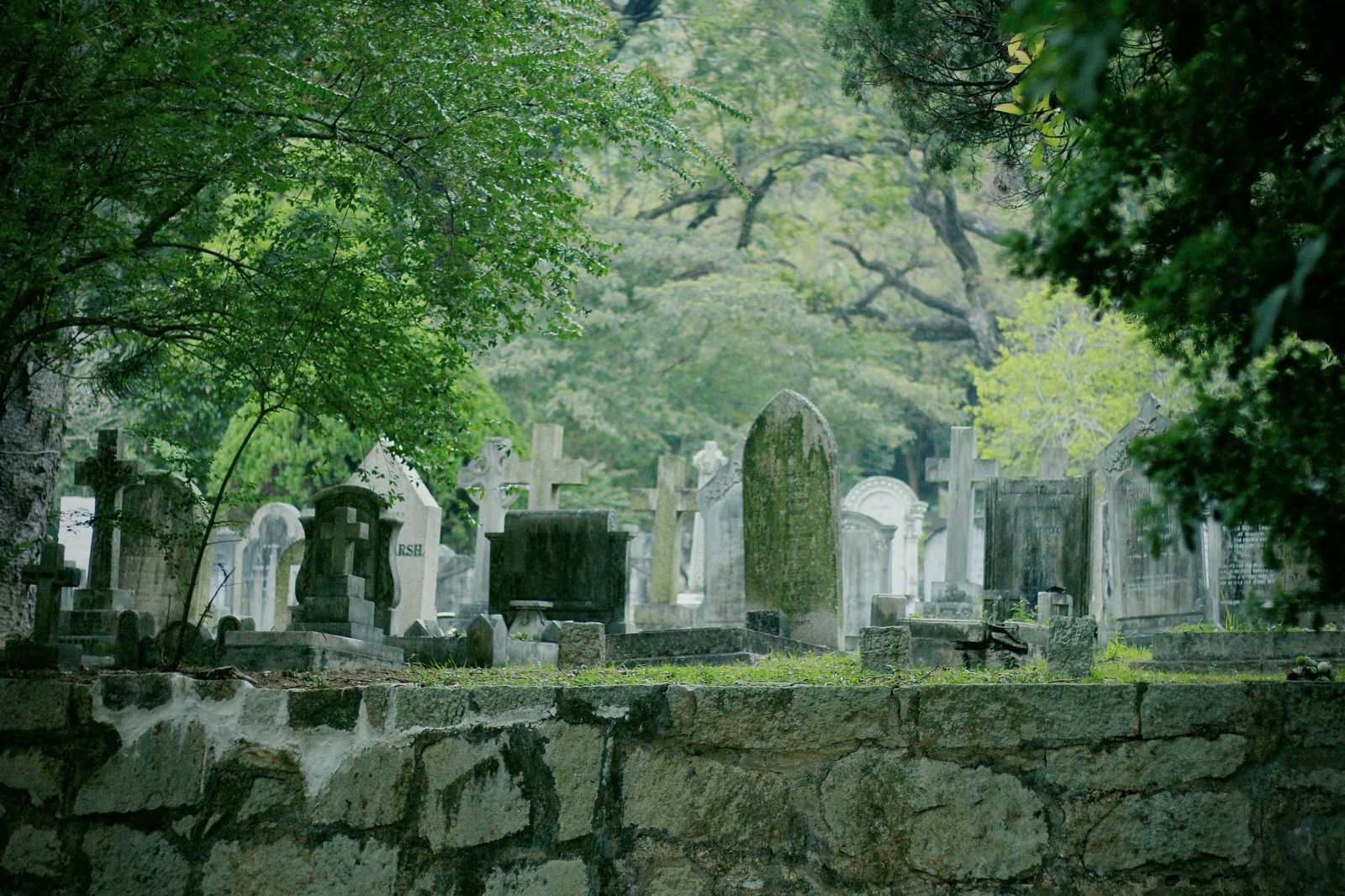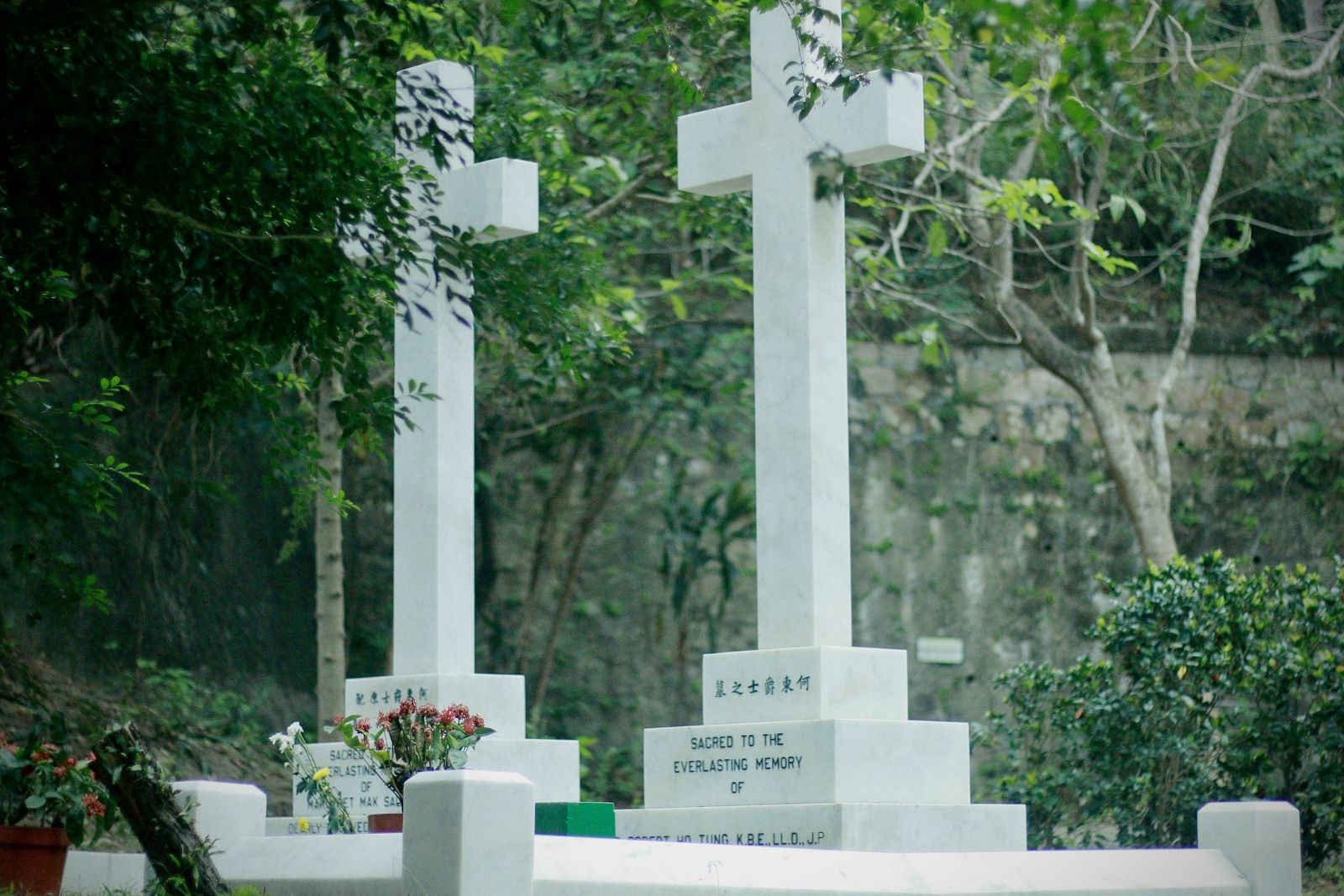Constructed in 1845, Hong Kong Cemetery is the city's oldest Western cemetery. Initially known as the Protestant Cemetery or the Colonial Cemetery, it's located in Happy Valley, directly across from the racecourse. Oddly enough, Happy Valley, once brimming with rice paddies, was considered too distant for the city's expansion.

The cemetery encompasses about 7000 tombstones, arranged in terraced rows up the slope, offering a picturesque stroll. The graves, diverse in shape and style, narrate Hong Kong's multicultural history. A military section contains approximately 150 military graves and monuments from World Wars I and II. Inscriptions on the stones indicate that most of those who perished in WWI were British naval officers, as suggested by the engraved naval anchor logos. WWII graves commemorate British battalions sent to assist Hong Kong during the Japanese invasion.
The cemetery is also the resting place for wealthy civilians, including the noted Sir Robert Ho Tung 何東 (1862-1956), a renowned tycoon and philanthropist after whom many parks and schools are named after. Colourful political figures, like Sir Kai Ho 何啟 (1859-1914), a leading surgeon and barrister who established Hong Kong's first medical college, are buried here. Sir Kai Ho is believed to have been the first Chinese man to marry an Englishwoman in a racially charged, colonial Hong Kong. Also noteworthy is Yeung Ku Wan 楊衢雲 (1861-1901), a Chinese revolutionary who planned with Dr. Sun Yat Sen 孫逸仙/孫中山 to overthrow the Qing dynasty and establish the Republic of China in the early 20th century.


Hong Kong Cemetery is abundant with tales and intriguing snippets etched into its fading stones. Be sure to wander up the slope and delve into every corner of the terraces.









